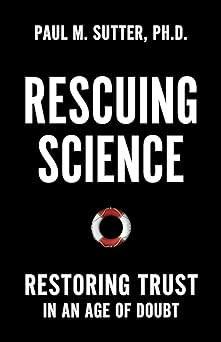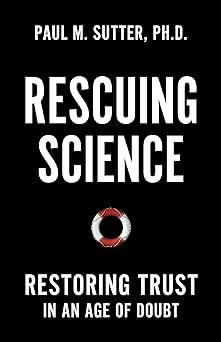In an era of declining trust in science, scientists must change the way they collaborate with the public and within the broader scientific community.
The vast majority of basic scientific research - the kind of science that penetrates ever deeper into uncharted territories and advances humanity's knowledge - is funded by government organizations. In the United States, this typically takes the form of federal agencies such as NASA, the National Science Foundation, the National Institutes of Health, and the Department of Energy. Scientists compete for grants to support the recruitment of students and junior researchers, purchase expensive equipment and write research papers.
Unfortunately, funding for the sciences has consistently declined in recent decades. While there are occasional spikes in increased funding Less money is going to basic research now, especially when measured as a fraction of all federal spending, than in over half a century.
This declining interest in science funding is fueled by declining interest and confidence in science itself. Although scientists have historically enjoyed high levels of trust among the public, that trust has consistently declined, from a high of 75% just before the pandemic to a current low of 57%, according to a Pew Research survey carried out between September 25 and October 1.
Related: What is the difference between science and pseudoscience?In addition, science is becoming increasingly politicized, with left-oriented policymakers more likely than right-oriented politicians to support science funding. The votes of these leaders largely reflect the views of their constituents: Respondents who identified as Republican were much less likely to rate scientists favorably.
With that decline in trust comes a decline in funding, and unfortunately for scientists, that decline in funding creates dysfunctions that lead to even more diminished trust.
The spreading disease
A reduction in public funding for science leads to three types of dysfunctional relationships: It affects the way scientists interact with each other, with students, and with the public.
Competition for grants has become increasingly fierce over the past decade, with scientists spending more and more time competing for fewer research dollars. The average grant rate is now below 20%, meaning researchers have to reapply year after year to get even a small amount of funding, with the awards usually not even enough to cover the time they spend in the spent primarily on applying for the subsidies.
To judge scientists in this competition for grants, prizes and professional opportunities, scientists encourage each other to publish - a lot. More than 3 million journal articles were published last year. The more a scientist publishes and the more that work is cited, the more likely scientists are to win prizes and advance in their careers.
This intense pressure to publish - often summarized as 'publish or perish' - has led to a staggering increase in shoddy work. Some of that is outright intentional fraud: a deliberate distortion of the data to obtain a publishable result. But more often it is pure laziness, driven by the eagerness to get an article out as quickly as possible. It is also the responsibility of journal publishers to adhere to a rigorous and thorough peer review process, which is not always the case.


Saving Science: Restoring Trust in an Age of Doubt: $38 at Amazon
Saving Science: Restoring Trust in an Age of Doubt is the culmination of Paul M. Sutter's long career in the scientific community, both inside and outside of academia. By weaving his own experiences as an astrophysicist with broader trends he and others have observed, Sutter roots the current distrust of science within the academic scientific community itself. In this book, Sutter reveals a community that has come to ignore the broader public, obsess over subsidies, ignore political landmines, restrict minority access, and allow fraud in the pursuit of fame.View Deal
Along with this increased competition for funding comes increased competition for jobs. Students are applying to science studies in record numbers, with some departments doubling or tripling the number of students compared to twenty years ago. Universities love this glut of students, as they often take out federal loans to pay for their increasingly expensive education. Yet there is no proportional growth in long-term positions. Students get their PhD, start a short-term job and then find themselves in their early thirties without a permanent job in science. In some areas, ten new doctorates are awarded for every new open position - an unsustainable situation.
Finally, scientists are discouraged from making their work known to the public. Hiring, tenure, and promotion committees view public outreach neutrally at best, and with derision and contempt at worst. Despite the public's crucial need to hear about the latest scientific research, scientists themselves are often the last to do so. And why would they? If it doesn't help them in their career, it's a waste of time for them.
The increase in fraudulent work, the lack of long-term career opportunities for budding young scientists, and the discouragement of science communication all contribute to a lack of interest in continuing science funding, starting the downward cycle again. Fortunately, there is a way out.
The exit
The lack of funding causes these dysfunctions within science. But scientists can't just expect to ask for more funding and automatically get it; the public is already becoming increasingly disillusioned. So instead, scientists must work within current funding constraints and present a new face to themselves, to their students, and to the public. That is the path to restoring confidence, and with that greater confidence comes more secure financing.
First, scientists must let go of the pressure to publish. There are already too many articles published for a researcher to keep track of his own field. Scientists pretend they can measure success by publications and citation counts, but this simply distorts the way science is done. Scientists should publish less and be given more time to develop long-term research plans.
In addition, funding agencies should offer more high-risk/high-reward programs, favor young researchers over established researchers, and introduce randomness into the selection process so that more researchers have the opportunity to try new, innovative ideas.
Related stories:
-From Yuri Gagarin's launch to today, human spaceflight has always been political
-The era of NASA's big space telescopes may be coming to an end
- 25 space conspiracies debunked
Second, if we want to maintain the current population of science students, we need to drastically reduce the number of short-term postdoctoral positions. If there are not enough permanent jobs in science, students should be trained for positions outside academia and allowed to leave academic research while they are still young, and not after some of their most productive years have already been spent.
Finally, scientists must communicate frequently and directly with the public. Science communication training should be a part of every graduate program and a built-in expectation of every faculty position.
Once scientists tackle fraud by reducing the pressure to publish, reducing disillusionment by being honest about career paths, and making science more personal by working face-to-face with the public, they can start building trust and regain funding, and from there can ensure the survival of science for generations to come.
